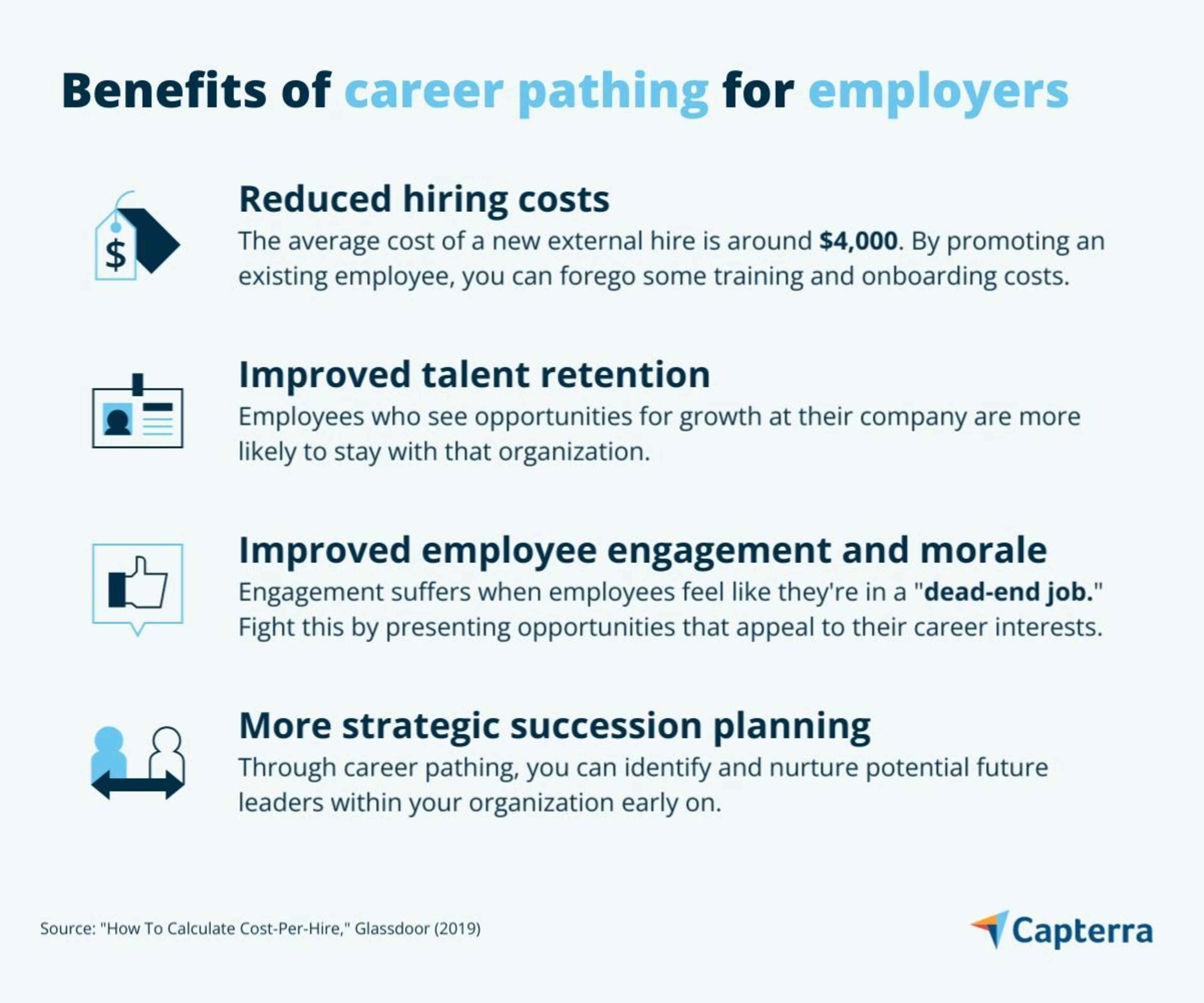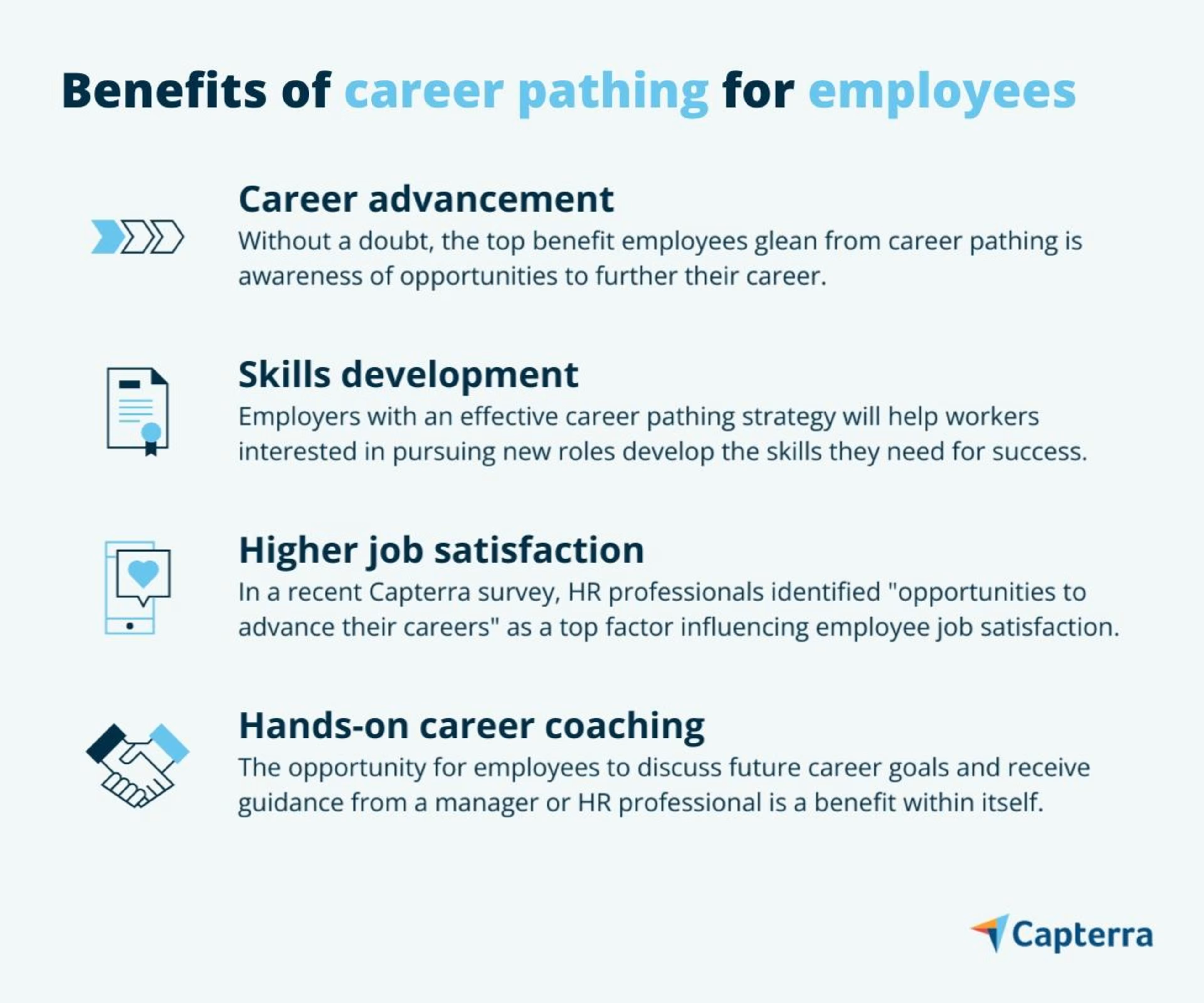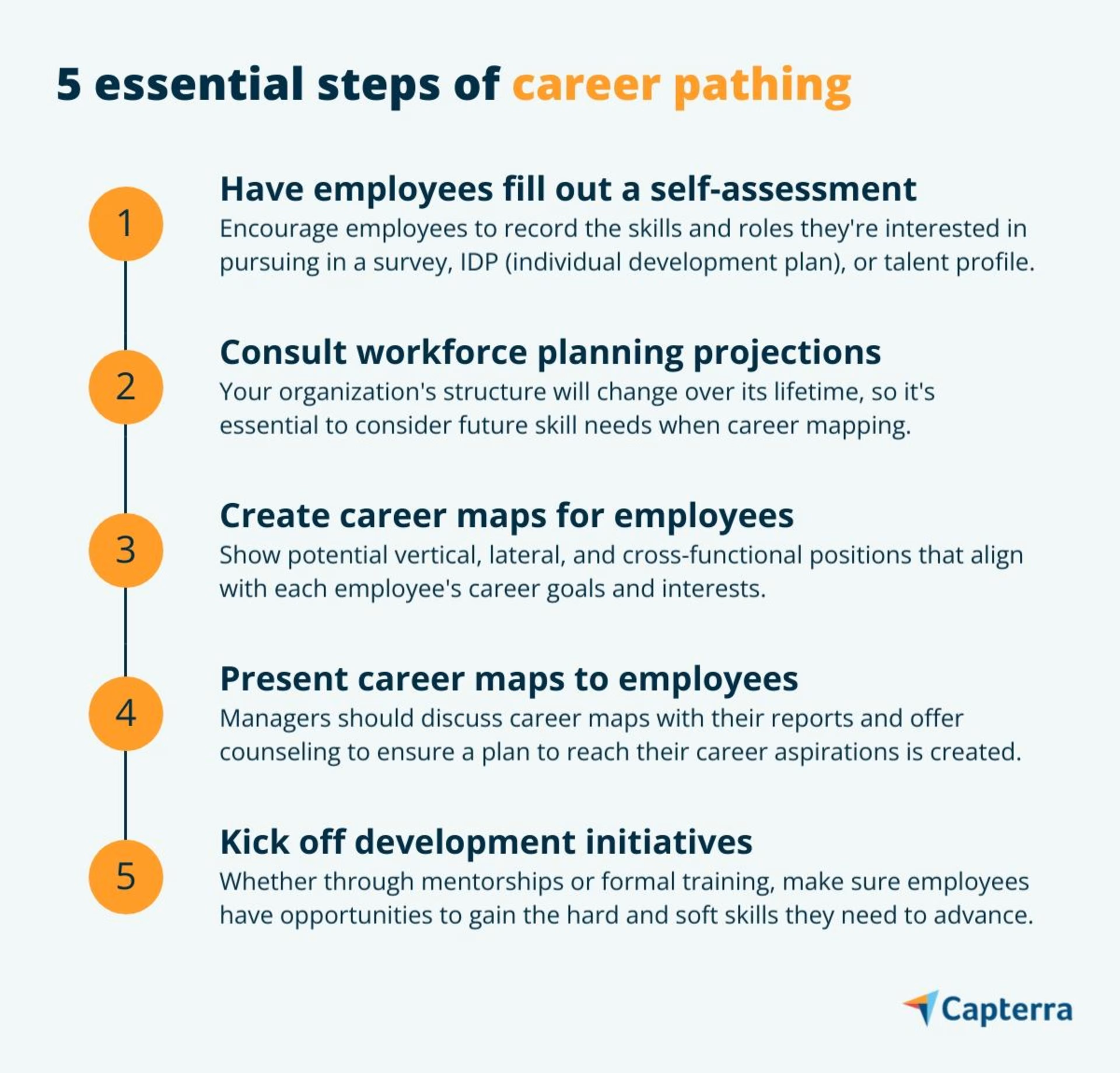Help employees envision a future at your business through formal career paths.
Let’s start with the hard facts: In the United States alone, over 4.5 million employees left their jobs in March of 2022. At the same time, the number of open jobs in the U.S. hit a record high of 11.55 million, which means that open positions exceed the number of available workers by 5.6 million.
It’s long been recognized by HR leaders that a lack of future career opportunities is a top driver of turnover in organizations. But even still, less than a third (30%) of employees believe that they have a clear path for career growth at their organization (full source available to Gartner clients).
Considering the competition employers face when recruiting talent in today’s working environment, HR leaders need to do everything they can to encourage employees to stay at their organization—including implementing a career pathing strategy.
If you’re an HR leader who is struggling to make the business case for investing in your organization’s learning and development strategy, try presenting career pathing as an option. As you’ll learn throughout this guide, career pathing is a win-win strategy that’s undeniably good for business.
So, let’s start with this: what exactly is career pathing?
What is career pathing?
Career pathing is an HR-led strategy that maps out employees’ potential trajectories through your organization, upwards, cross-functionally, and laterally. This requires identifying the skills and experience an employee needs to gain in order to transition into a new role.
In their glossary, Gartner defines career pathing as this:
“The process of aligning opportunities for employee career growth with organizational talent priorities. Career pathing is driven by the individual's skills, interests and career objectives. It also serves as a catalyst for employee participation in learning and development programs that fulfill the current and future needs of the organization.”
What’s important to note about Gartner’s definition is that career pathing is seen as an employee engagement strategy in addition to a development tactic, because your employees’ interests are taken into consideration when mapping out career progression options.
Why is career pathing an important practice?
In Capterra’s Remote Work Culture Survey* from January 2022, we asked HR professionals to rank 14 factors that influence their employees' job satisfaction from most important to least important. Compensation and work-life balance were seen as the most influential, with opportunities to advance their career, job security, and work flexibility following closely behind.
This finding illustrates how important career development opportunities are to employees, and during a time when voluntary turnover is at an all-time high, getting your EVP (employee value proposition) right is a no-brainer.
But there are even more benefits to career pathing for employers and employees, as is outlined in the sections below.
Employers experience a boost in retention from career pathing
Career pathing creates a better employee experience, and in turn, helps improve employee retention. A survey from Gartner proved this to be true by revealing that career partnerships promoted through career pathing increased employees’ intent-to-stay by 33% (full source available to clients).
But one under-recognized benefit of career pathing is that it can help shape succession planning.
In succession planning, the HR department evaluates future skills requirements alongside the competencies of existing employees in order to identify talent with the potential to meet future skills needs. With career pathing, employees are empowered to express their interest in management or leadership roles, helping create a pipeline of internal talent who can be developed to step into future leadership roles.

Employees gain career advancement opportunities from career pathing
In late 2021, we polled over 600 employees for Capterra’s Employee Experience Survey** and asked them how likely they are to look for a new job in the immediate future on a scale of one (not at all likely) to seven (extremely likely). Forty-three percent chose a five or higher.
This is evidence of something we’ve been harping on a lot lately in our HR-related content: Employees are leaving their jobs at an alarming rate.
HR leaders need to take action to retain talent—namely, making their workplace one where employees want to stay. But Capterra’s Remote Work Culture Survey* found that while a large majority (87%) of HR leaders agree that their employee learning and development (L&D) program will be critical to retaining talent in 2022, less than half (48%) are actually increasing their L&D budget for the year.
Career pathing offers an affordable solution, as the primary investment required is HR leaders’ and managers’ time. And the return on that investment is notable—career pathing opens the door to mentorship, professional development, skills training, and career advancement opportunities for employees.

Ready to hire a recruiting agency for your business needs? Browse our list of companies in the following areas:
5 essential steps of career pathing
Before we send you on your way, we’re going to provide you with a brief overview of the career pathing process.

For a more in-depth look at the five steps listed above, visit our content: Looking For a Career Pathing Template? The Search Ends Here.
One thing worth noting about kicking off a career pathing initiative is that while it starts in the human resources department, depending on the size of your organization, it may make sense to hand off some of the responsibilities to team managers.
For instance, if your workforce headcount is higher than 50, counseling individual employees isn’t a feasible task for an HR professional alone. Instead, team managers should take on the responsibility of discussing career aspirations with their reports and building out employee development plans that help them achieve their goals.
Lastly, don’t miss the tools and tips section below where we’ll give you some final suggestions of resources that can help you smoothly deploy this strategy at your organization.
Capterra tools and tips
A career pathing program can help your organization improve employee engagement and retention, as well as better prepare to meet evolving skill needs. The benefits of creating one are absolutely clear, and to make things even easier for you, we’re providing some extra resources below that will help you put the five essential steps above into practice.
Talent management software: A vast category of tools, this type of software includes features that will help you collect and organize information needed for career conversations with employees such as employee pulse surveys, talent profiles, and individual development programs.
Learning management systems (LMS): You know what goes great with a career path? A personalized learning plan that helps your employees get there. Learning management systems offer these features, along with many other functionalities that help you train and teach your talent.
A Better Way To Do a Skills Gap Analysis: This approachable, step-by-step guide to conducting a skills gap analysis is a must-bookmark resource for any HR leader— especially those who want to think about the future of their business when developing career pathways for employees.
What Is Strategic HR Planning? A Guide for Your Business: Need a refresher on why strategic HR is the only way to keep your business…in business? Check out our complete guide to strategic HR planning.

